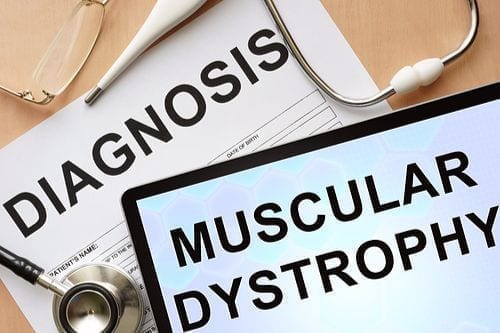
This post discusses Social Security Disability for Muscular Dystrophy. If you or someone you care for is unable to work due to Muscular Dystrophy read on for how SSA will evaluate your claim for disability benefits .
Types of Social Security Disability Benefits
SSA offers two types of benefits for disability claimants: Social Security Disability Insurance Benefits (SSDI) and Supplemental Security Income (SSI). SSDI is based on the credits from the work you have done in your life while SSI is a need based program.
You must be found disabled under SSA's Five Step Sequential Evaluation before you are entitled to either benefit. The first step is to apply for benefits online or at your local SSA office. If you are unable to work due to your muscular dystrophy apply for SSI and/or SSDI benefits as soon as possible. Delay may cause you to lose benefits!
What is Muscular Dystrophy?
Muscular dystrophy is a group of genetic (inherited) diseases in which muscle fibers are unusually susceptible to damage. Progressive muscle weakness and muscle mass loss can result in paralysis. Muscles not only enable the human body to move, they also determine blood flow (heart muscle), breathing, digestion and other essential body functions.
There are more than 30 different kinds of muscular dystrophy. Some forms start in childhood while others do not begin until adulthood. Via The Mayo Clinic . The most common forms are: Duchenne muscular dystrophy (DMD – the most common form in children), Becker muscular dystrophy, Myotonic muscular dystrophy (the most common form in adults), Congenital, Emery-Dreifuss, Facioscapulohumeral (FSHD), Limb-girdle, Distal and Oculopharyngeal. Via NIH .
Myotonic Dystrophy (also called MMD or Steinert’s disease) affects at least 1 in 8,000 people worldwide. People with this disorder often have prolonged muscle contractions (myotonia) and are not able to relax certain muscles after use. Clouding of the lens of the eye (cataracts), abnormalities of the electrical signals that control the heartbeat (cardiac conduction defects), early balding and infertility are also symptoms. The severity of the condition varies widely among affected people, even among members of the same family. Via NIH .
Myotonic dystrophy is diagnosed by a neurologist. Various forms of testing are used to make a diagnosis: family history, blood work, physical examination, EMGs or muscle biopsy. Treatment can include medications, physical therapy or splints/orthotics. There is no cure or specific treatment for myotonic dystrophy. Via John Hopkins. Also read our post Disability for Myotonic Dystrophy.
Social Security Disability for Muscular Dystrophy
As with most claims for Social Security Disability, the name of your impairment is not as important as the severity of your symptoms. Unfortunately, a muscular dystrophy patient can experience progressive symptoms. The progression of symptoms varies from one person to another.
The Social Security Administration evaluates claims for adult disability benefits for Muscular Dystrophy under 11.13 (children are evaluated under 111.13). This listing requires significant and persistent disorganization of motor function in two extremities, resulting in sustained disturbance of gross and dexterous movements, or gait and station.
In simple terms, you must have lost the use of two hands or two legs, or one hand and one leg. If you are unable to walk without a cane (or walker) or you are unable to use your hands to perform tasks such as writing, opening door knobs or grasping, you may meet this listing. In addition, Fukuyama Congenital Muscular Dystrophy is also on the Compassionate Allowance List .
If you meet the above listing, working has long stopped being an option for you, unfortunately. You may not meet the above listing but are still unable to work due to your Muscular Dystrophy (most listings are difficult to meet). Muscular Dystrophy can affect other areas of your body, such as your ability to speak, balance or see.
If you are 50 years of age or older, SSA can use the Medical Vocational Guidelines (SSA Grid Rules) to find you disabled as well. If you have been assessed with Muscular Dystrophy and are unable to work, you should file your claim for SSDI/SSI as soon as possible.
The Bishop Law Firm represents Social Security Disability clients in Raleigh, Durham, Fayetteville, Cary, Rocky Mount, Wilson, Smithfield, Louisburg, Chapel Hill, Roanoke Rapids and surrounding areas in North Carolina. Call us today for a free case review, (919) 615-3095 .
Also read Overview of the Disability Process

